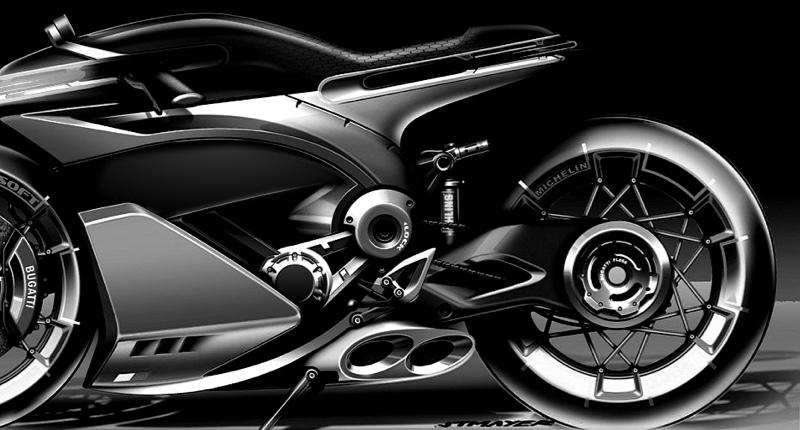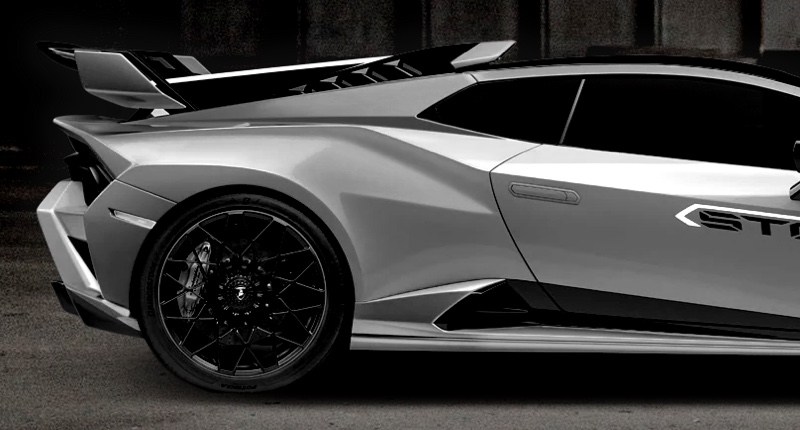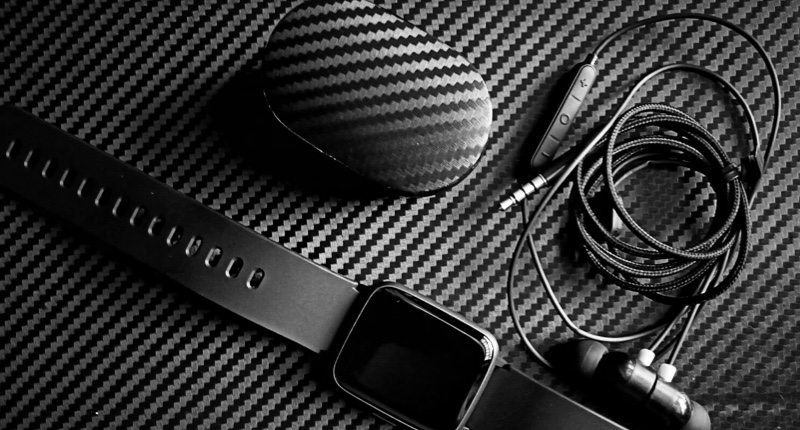Certification and Safety Standards for Carbon Fiber Helmets
- Certification and Safety Standards for Carbon Fiber Helmets
- Why Certification Matters for Your Carbon Fiber Helmet
- Major Helmet Standards and What They Mean for Carbon Fiber Helmets
- What Tests Do Carbon Fiber Helmets Undergo?
- How Carbon Fiber Helmets Differ from Other Shell Materials
- How to Verify Certification and Avoid Counterfeit Carbon Fiber Helmets
- Maintenance, Service Life and When to Replace Your Carbon Fiber Helmet
- Buying Guide: Choosing a Certified Carbon Fiber Helmet
- Certification Labels Explained: What to Look For on a Carbon Fiber Helmet
- Why Choose Supreem Carbon for Certified Carbon Fiber Motorcycle Parts and Helmet-Grade Components
- Supreem Carbon's Capabilities and Advantages in Carbon Fiber Manufacturing
- Core Products: carbon fiber motorcycle parts, carbon fiber automobile parts, customized carbon fiber parts
- How Supreem Carbon Supports Safety Compliance for Custom Carbon Fiber Parts
- Contact Supreem Carbon — Request Quotation or Technical Consultation
- FAQ — Common Questions About Carbon Fiber Helmet Certifications
- Q: Is a carbon fiber helmet automatically safer than a polycarbonate helmet?
- Q: Which certification should I look for if I ride on European roads?
- Q: Can a carbon fiber helmet be used for motorsport events?
- Q: How often should I replace my carbon fiber helmet?
- Q: How do I avoid buying counterfeit certified helmets?
- Sources and References
- Customer Support / See Products — Call to Action
Certification and Safety Standards for Carbon Fiber Helmets
Why Certification Matters for Your Carbon Fiber Helmet
When you buy a carbon fiber helmet, you are investing in both protection and performance. The term carbon fiber helmet often implies a lightweight, high-stiffness shell — attributes that can improve comfort and aerodynamics. However, shell material alone does not guarantee safety. Certifications and safety standards exist to ensure helmets meet minimum levels of impact protection, penetration resistance, retention strength, field of vision and other safety-critical requirements. Verifying that your carbon fiber helmet meets recognized standards (such as DOT, ECE, Snell, or CPSC) helps ensure the product protects you in real-world crashes and complies with legal requirements in many regions.
Major Helmet Standards and What They Mean for Carbon Fiber Helmets
Different regions and activities require different helmet standards. Below is a concise comparison of widely recognized standards that apply to carbon fiber helmets used for motorcycles, motorsports, and bicycles.
| Standard | Region / Use | Primary Tests | Applicability to Carbon Fiber Helmet |
|---|---|---|---|
| DOT (FMVSS 218) | USA / Motorcycle | Impact attenuation, penetration, retention system, labeling | Permits composite shells including carbon fiber when tests passed; quality control varies by manufacturer |
| ECE 22.06 (formerly 22.05) | Europe / Motorcycle | Energy management, oblique impacts, penetration, chin bar, homologation batch testing | Stricter testing cadence; common standard for high-quality carbon fiber helmets sold in EU |
| Snell (M2020 / SA2020) | International / Motorcycle & Motorsport | High-energy impacts, penetration, retention, shell integrity at higher impact levels | Often more conservative/higher-energy thresholds; carbon fiber helmets designed for racing commonly pursue Snell |
| CPSC | USA / Bicycle | Impact attenuation, strap strength, coverage | Bicycle carbon fiber helmets must meet CPSC; construction and rotational protection (e.g., MIPS) are separate considerations |
| FIA / FHR | Motorsport (FIA homologation levels) | High ballistic/penetration resistance, flame resistance, energy management for racing | Top-tier carbon fiber racing helmets are homologated to FIA 8859/8860 series depending on discipline |
Sources for the table are listed at the end of this article. In short: for everyday motorcycle use, look for DOT or ECE labels; for competitive racing, look for Snell or FIA homologation; for bicycles, follow CPSC and EN standards where applicable.
What Tests Do Carbon Fiber Helmets Undergo?
Understanding the tests behind certifications helps you interpret labels and marketing claims. Common tests include:
- Impact attenuation: Several strike locations are tested with different impact energies to measure how much force is transmitted to the headform.
- Penetration resistance: A pointed striker is dropped on the shell to evaluate resistance to puncture.
- Retention system strength: Chin strap and buckle tests assess the ability to keep the helmet on the head during high loads.
- Shell integrity: Shell and structural tests check for cracking or catastrophic failure under high stress.
- Oblique impact / rotational tests: Newer standards (e.g., ECE 22.06) include oblique impacts, measuring rotational acceleration that contributes to brain injury.
- Flammability: Motorsport standards often require flame-resistance tests for interior materials.
Carbon fiber shells typically excel in stiffness and penetration resistance but must be paired with appropriate multi-density liners to manage impact energy effectively. A shell that is too rigid without a proper liner can transfer high forces to the head — that’s why certification focuses on the complete helmet system (shell + liner + retention).
How Carbon Fiber Helmets Differ from Other Shell Materials
Common shell materials include polycarbonate, fiberglass, Kevlar, and carbon fiber or hybrid composites. Compared with polycarbonate, carbon fiber shells are usually lighter and stiffer. Compared with fiberglass, carbon fiber often delivers a higher strength-to-weight ratio and can be engineered to be thinner for the same structural performance.
Key differences relevant to safety and certification:
- Energy management: Carbon fiber shells can be very stiff. Proper energy absorption relies on the liner design (EPS or multi-density foam) to dissipate energy. Certification ensures the helmet performs as a system.
- Penetration resistance: Carbon fiber has good penetration resistance but can be brittle; laminate quality and resin systems matter.
- Consistency in manufacturing: Composite processes (autoclave curing, resin infusion, layup quality) influence variability. Certified manufacturers implement quality control to ensure repeatable performance.
- Rotational protection: Carbon shell construction must accommodate rotational management technologies (MIPS or other slip-plane systems) when desired to reduce rotational forces.
How to Verify Certification and Avoid Counterfeit Carbon Fiber Helmets
Manufacturers and sellers may misuse certification names or apply stickers improperly. Follow this checklist when evaluating a carbon fiber helmet:
- Check the interior label/sticker for the standard (DOT, ECE, Snell, CPSC) and a homologation number if applicable (ECE includes a typed approval number).
- Cross-check the manufacturer and model on the certifying body’s published list (many homologation bodies publish approved lists or approval numbers).
- Inspect build quality: consistent carbon weave, smooth resin finish, secure interior pads and straps, and clean vent/trim work indicate better QC.
- Beware of unusually low prices for high-end carbon fiber helmets — they may be counterfeit or uncertified.
- Ask for manufacturer documentation or test reports for large or custom orders, especially for motorsport use.
Maintenance, Service Life and When to Replace Your Carbon Fiber Helmet
Helmet lifespan and maintenance are part of safety. Key recommendations:
- Replace any helmet that was impacted in a crash — even if there is no visible damage. Energy absorption can be permanently compromised.
- General service life: many manufacturers and safety authorities recommend replacing motorcycle helmets every 3–7 years depending on usage, storage, and exposure to sunlight/chemicals. A conservative standard is about 5 years for frequent riders.
- Inspect straps, buckles, internal foam and shell for deterioration. UV, sweat and chemicals can degrade resins and foam over time.
- Follow cleaning guidelines: use mild soap and water; avoid petroleum-based cleaners that can weaken liners and adhesives.
For competitive motorsport helmets, adhere to homologation expiry dates and re-homologation requirements; some racing bodies require helmets to be renewed or recertified periodically.
Buying Guide: Choosing a Certified Carbon Fiber Helmet
buyers often want a helmet that balances safety, weight, comfort and style. Practical considerations:
- Match the certification to your use: For road motorcycles in the US, DOT suffices legally, but ECE and Snell may offer higher performance benchmarks. For racing, follow event organizer requirements (Snell, FIA).
- Fit is paramount: A certified helmet that fits poorly will not protect effectively. Try on helmets in the same size and shape category (round, intermediate, long oval).
- Weight versus protection: Carbon fiber reduces weight, which reduces neck fatigue, but confirm that the helmet’s liner and system pass the required tests.
- Rotational protection: Consider helmets with MIPS or equivalent systems if you are concerned about rotational brain injuries (more common in bicycle helmets but increasingly relevant across categories).
- Ventilation and comfort: For everyday use, good ventilation and removable/washable liners improve comfort and hygiene.
Certification Labels Explained: What to Look For on a Carbon Fiber Helmet
Common labeling cues:
- DOT: Look for the DOT label inside the helmet and the manufacturer's certification statement. In the US, the label indicates compliance with FMVSS 218.
- ECE: ECE 22.06/22.05 labels typically include a type approval number and the homologation country code (e.g., E1 for Germany).
- Snell: Snell labels include a certificate number and date of certification.
- CPSC / EN: Bicycle helmets have specific labels indicating compliance with CPSC or EN 1078 (Europe).
Remember that labels should match the helmet model and manufacturer; suspicious placements or generic stickers are red flags.
Why Choose Supreem Carbon for Certified Carbon Fiber Motorcycle Parts and Helmet-Grade Components
Supreem Carbon, established in 2017, is a customized manufacturer of carbon fiber parts for automobiles and motorcycles, integrating R&D, design, production, and sales to deliver high-quality products and services. Although Supreem Carbon primarily produces vehicle components rather than finished certified helmets, our expertise in carbon fiber composite technology and strict production standards make us an ideal partner for companies and teams that require high-quality helmet-grade materials and custom carbon fiber components.
Supreem Carbon's Capabilities and Advantages in Carbon Fiber Manufacturing
Key strengths that support safety-focused products:
- R&D and technical expertise: Supreem specializes in technology research and development of carbon fiber composite products. This includes material selection, laminate design, and process optimization — all critical for producing shells and components that meet safety test requirements.
- Production scale and skilled staff: The factory spans approximately 4,500 square meters with 45 skilled production and technical staff, enabling consistent quality control across batches.
- Product breadth: Over 1,000 product types and more than 500 customized carbon fiber parts demonstrate depth in custom capabilities, from aerodynamic fairings to structural components.
- Quality focus: Supreem's integrated approach (R&D to sales) helps maintain traceability and promotes compliance-oriented manufacturing suitable for partners seeking certification-ready parts.
Core Products: carbon fiber motorcycle parts, carbon fiber automobile parts, customized carbon fiber parts
Supreem Carbon's core offerings include carbon fiber motorcycle parts, carbon fiber automobile parts, and highly customized carbon fiber products. For businesses seeking components that meet strict tolerances and material specifications, Supreem provides:
- Customized fairings, aerodynamic components and cosmetic parts with consistent carbon weave and resin quality.
- Structural carbon fiber components engineered for rigidity and weight optimization.
- Carbon fiber luggage and sports equipment where strength-to-weight is essential.
These capabilities are directly relevant to manufacturers or designers who require carbon fiber shells or shell blanks intended for helmet production or other safety-critical applications. Supreem supports customers through prototype development, material testing, and scalable production — all of which contribute to passing certification tests when paired with the appropriate liner systems and final assembly by a certified helmet manufacturer.
How Supreem Carbon Supports Safety Compliance for Custom Carbon Fiber Parts
Although final certification for helmets involves the complete helmet system and accredited testing facilities, Supreem Carbon contributes to safety compliance by:
- Providing controlled layup and curing processes to reduce variability in laminate strength.
- Working with customers on material specification (fiber type, fiber orientation, resin systems) to meet design targets for stiffness and penetration resistance.
- Offering prototype testing and dimensional inspection to ensure parts match design intent.
- Supporting documentation and traceability for material batches and production records — necessary when engaging certifying bodies.
Visit Supreem Carbon to review product catalogs or discuss custom projects: https://www.supreemcarbon.com/
Contact Supreem Carbon — Request Quotation or Technical Consultation
If you need certified-grade carbon fiber components or custom shells for helmet projects, contact Supreem Carbon's sales and technical team for a consultation. For product inquiries or to request samples, please visit the website above or contact customer service directly to discuss specifications, certifications, and production timelines.
FAQ — Common Questions About Carbon Fiber Helmet Certifications
Q: Is a carbon fiber helmet automatically safer than a polycarbonate helmet?
A: Not automatically. Carbon fiber offers weight and stiffness advantages, but safety depends on the full helmet system (shell, liner, retention). A certified polycarbonate helmet can outperform an uncertified carbon fiber helmet. Always check recognized certifications and fit.
Q: Which certification should I look for if I ride on European roads?
A: For road use in Europe, ECE 22.06 (or 22.05 older models) is the standard to look for. Many riders also value additional Snell testing for higher impact energy protection, but ECE is the regulatory norm.
Q: Can a carbon fiber helmet be used for motorsport events?
A: Yes, but motorsport events typically require helmets homologated to Snell or FIA standards. Check the specific event's regulations; some require recent Snell or FIA certification levels for competition.
Q: How often should I replace my carbon fiber helmet?
A: Replace after any significant impact. Otherwise, many manufacturers recommend replacement every 3–7 years depending on exposure and use; a common conservative guideline for riders is about 5 years.
Q: How do I avoid buying counterfeit certified helmets?
A: Buy from authorized dealers, verify the certification label and approval number, inspect build quality, and avoid prices that seem too low for genuine carbon fiber products. Ask the seller for documentation if unsure.
Sources and References
- National Highway Traffic Safety Administration (NHTSA) — FMVSS 218 (DOT motorcycle helmet standard)
- United Nations Economic Commission for Europe (UNECE) — ECE 22.05 and ECE 22.06 helmet regulations
- Snell Memorial Foundation — Snell M/SA helmet standards and technical summaries
- U.S. Consumer Product Safety Commission (CPSC) — Bicycle helmet safety standard
- FIA — Helmet homologation requirements for motorsport (FIA 8859 / FIA 8860 series)
- Helmet manufacturers' guidance and published test methodologies (various)
Customer Support / See Products — Call to Action
If you want certified carbon fiber components, helmet-grade shell blanks, or customized carbon fiber motorcycle parts, contact Supreem Carbon for a consultation. Visit https://www.supreemcarbon.com/ to view products or reach out to customer service for pricing and technical support.
End of article.
What are the application scenarios of carbon fiber interior?
Carbon Fiber Molding & Manufacturers | Supreem Carbon
Top motorcycle carbon fiber parts Manufacturers and Suppliers
Custom carbon fiber motorcycle fairings Manufacturers and suppliers
For Products
Which surface could you provide for the carbon parts?
Gloss finish, matte finish, satin finish. Some color coating as the customer needs.
For Customized Service
What custom customer need to prepare?
1. Send Your Design/Idea/3D drawing.
2. Supplier Quotation Confirmation.
3. Firts Sample Feedback.
What is the customization process of carbon fiber products?
1. Customer provide 3D drawing, design requirement or idea
2. Technician evaluate project feasibility and provide a quotation
3. Project confirmation and arrange sample production
4. Delivery and customer feedback
5. Big scale orders production
For Facotry
How many monthly production capacity of the factory?
The average monthly production capacity reach 3000 pieces. With the equipment upgrade, it will be increased over 4000 pieces per month.
Can I visit your company?
Of course, we are in QiaoTou Town, Dongguan City, Guangdong Province, China.

Yamaha R1 Carbon Fiber Side Fairings
Introducing the Supreem Carbon Fiber Long Side Panels for Yamaha R1. Crafted with precision and expertise, this front side fairing is designed to elevate the performance and aesthetics of your R1. Made from high-quality carbon fiber, this fairing is not only lightweight but also incredibly durable, providing optimal protection for your motorcycle.

Yamaha R1 Carbon Fiber Airbox Tank Cover
The Supreem Carbon Yamaha R1 Carbon Fiber Airbox Tank Cover provides lightweight, durable protection with a sleek finish. Designed for R1 models, it enhances the style and performance of your bike. Its lightweight structure improves performance while maintaining the premium aesthetics necessary for high-end modification projects. As a dedicated manufacturer of carbon fiber parts, we provide stable production capacity, customization options, and strict quality control to support enterprise-level procurement and OEM/ODM needs.

Carbon Fiber Rear Seat Panel for BMW S1000R & M1000RR – Lightweight Performance
This carbon fiber rear seat panel is engineered for the BMW S1000R and M1000RR, offering superior rigidity, reduced weight, and a premium racing finish. Produced with autoclave technology and strict QC standards, the part ensures consistent OEM-level fitment. Supreem Carbon provides wholesale supply, stable bulk production, and customized solutions for global clients.

High-Performance Carbon Fiber Rear Undertail for BMW S1000R
Engineered for distributors, tuning brands, and motorcycle accessory businesses, the BMW S1000R Carbon Fiber Rear Undertail is a high-quality, durable, lightweight carbon fiber upgrade for the S1000R platform. This component is manufactured using aerospace-grade carbon fiber and precision molds to deliver superior stiffness, a seamless OEM-level fit, and a premium visual finish suitable for high-end aftermarket applications.
© 2024 Supreem Carbon All Rights Reserved.





Facebook
Pinterest
LinkedIn
Instagram